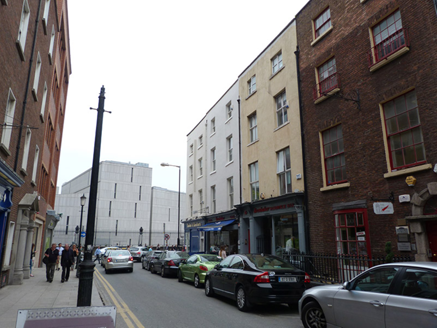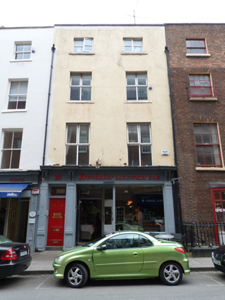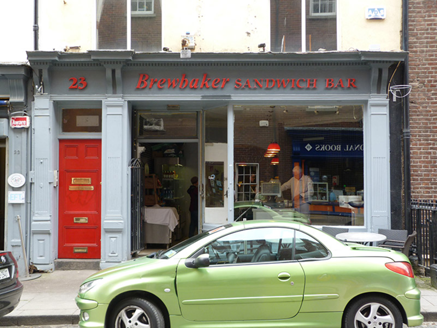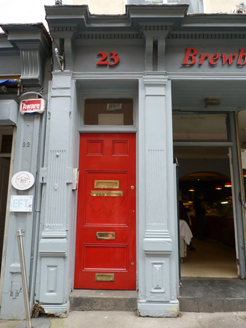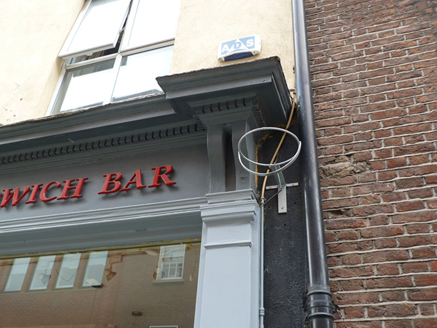Survey Data
Reg No
50100093
Rating
Regional
Categories of Special Interest
Architectural, Artistic
Original Use
House
In Use As
Restaurant
Date
1730 - 1750
Coordinates
316190, 233844
Date Recorded
10/06/2016
Date Updated
--/--/--
Description
Attached two-bay four-storey former house over concealed basement, built c. 1740, having full-height closet return, and later flat-roof extension to re-entrant angle. Now in use as café with offices over, having shopfront of c. 1900 to ground floor. Cruciform slate roof with valleys, half-hipped to east and west ends, concealed by rendered parapet with painted masonry coping to front elevation. Large shared rendered chimneystack to south party wall, rendered chimneystack to north of return; concealed gutters, and replacement cast-iron hoppers and downpipes. Painted smooth rendered walling, unpainted to rear elevation. Square-headed window openings, diminishing in height to upper floors, with patent rendered reveals, painted masonry sills and replacement uPVC windows. Shopfront flanked by half-fluted pilasters on panelled plinth blocks supporting paired ogee console brackets to timber fascia with raised modern lettering, and having projecting dentillated cornice, timber display window on timber panelled stall-riser, integrated recessed replacement glazed timber door with overlight, recent tiled step to street and cast-iron basement lights. Replacement timber door to north end with overlight and having single granite step to street. Forms part of largely cohesive row of early houses.
Appraisal
A mid-eighteenth-century house, originally gable-fronted but characteristically having the attic storey later built up with a horizontal parapet during the early nineteenth century, to conform with the later Georgian character. The cruciform roof plan, central chimneystack and closet return are important original features that indicate the earlier appearance of the house, serving as a physical record of how the city's architecture evolved to suit changing fashions. A traditional early twentieth-century timber shopfront is largely retained across the ground floor and adds artistic interest to this building. Despite the insertion of replacement uPVC windows, No. 23 forms part of a largely unified terraced row on the northeast side of South Frederick Street, a row that is one of the most coherent groups of formerly gable-fronted houses in the city.
